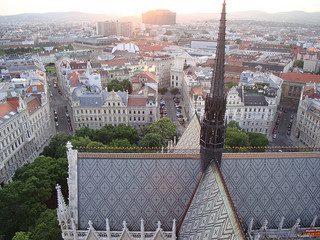
So it made my feminist heart skip a beat when I heard of the attention given to gender equality in Austria. The article “How to Design a City for Women“ in Atlantic Cities details “gender mainstreaming,” a practice that was adopted in the ’90s after urban planners studied how men and women use public spaces differently.
Eva Kail is the gender expert for Vienna’s Urban Planning Group (what a concept!) and was on a team that studied the patterns of women in their daily life to influence everything from housing to transportation plans.
One of the outcomes of the conscious gender considerations is a housing project with on-site daycare and social gathering areas. Women were involved in every step of the process, a rarity in Vienna at the time.
Not surprisingly, the project generated media backlash when first announced, but as commenters on the piece noted, replace “woman” with the term “caregiver” and you have a situation free from emotion-inducing gender affiliations.
Sounds like success, right? Yet, this concept of gender equality in planning is completely absent in America. I wonder, how many urban planning or revitalization projects would have benefitted from a gender expert?
Studies show that investing in women boosts the economy. More than men, women tend to put their earnings back into their families and communities. Isn’t that what’s needed for neighborhood revitalization—people investing in the communities in which they live?
At the conclusion of the piece, author Clare Foran quotes Eva Kail as saying:
“For me, it’s a political approach to planning. It’s about bringing people into spaces where they didn’t exist before or felt they had no right to exist.”
No gender tie-ins, just beautiful inclusion for all. That’s what you get when women lead the way.
(Photo by Peter M. CC BY-NC-SA)





I respectfully disagree with most of your article. Women put more of their earnings into family and community than men?? Really?? Maybe someone you know, but not hardly. What a sexist statement. Lots of sexist statements here, doesn’t build progress when the philosophy touts going from the extreme of Mad Men to the other.
Personally, it has been my experience that the planning profession is heavily tipped with women over men. As a planner for more than 30 years, in the private and public sector, in urban areas and small towns, the overwhelming populace in the planning circles have been women, young and old. A nice balance would help the profession in many ways.
So get over yourself and your ‘feminist’ feelings of superiority. Thanks